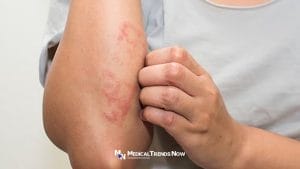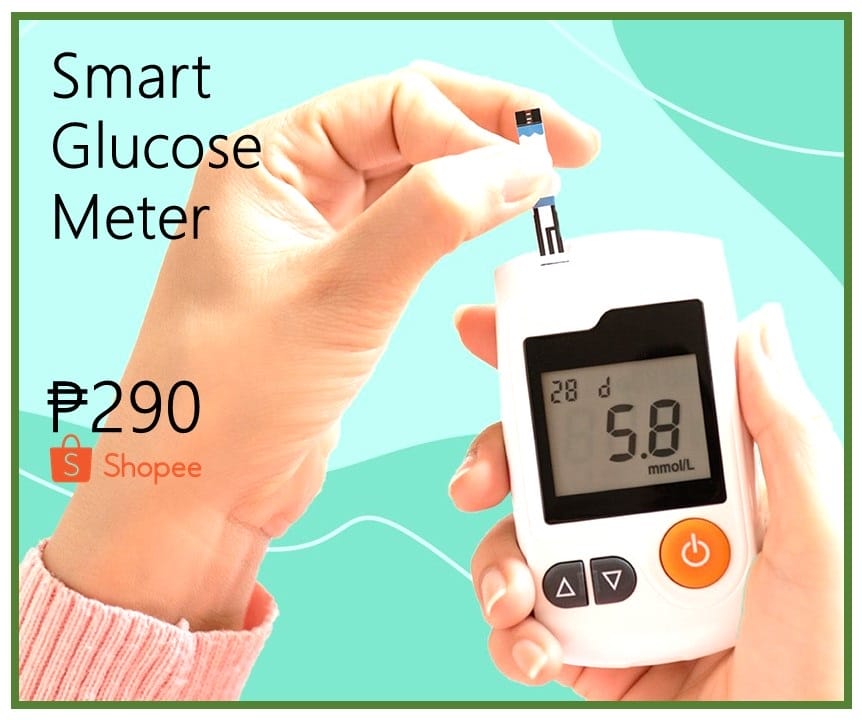Table of Contents
With the prevalence of allergies on the rise in the Philippines, it is important for Filipinos to understand and be aware of anaphylaxis, a serious and potentially life-threatening allergic reaction. Anaphylaxis can occur suddenly and can be caused by a variety of triggers, from food or medication to insect stings or bites. This article will provide readers with a closer look at anaphylaxis: its causes, prevention practices, and treatment options.
What is Anaphylaxis
Anaphylaxis is a severe, potentially life-threatening allergic reaction that can occur within minutes to hours of exposure to an allergen. Anaphylaxis occurs when the body’s immune system overreacts to an allergen and releases too much histamine into the bloodstream, causing symptoms such as hives, swelling, difficulty breathing, and loss of consciousness. It is important for individuals who are at risk of anaphylaxis to be aware of the signs and symptoms so they can take appropriate action if necessary.
Causes of Anaphylaxis
Anaphylaxis is a severe, life-threatening allergic reaction that can occur in response to certain allergens. It affects the entire body and causes the airways to constrict, making it difficult for a Filipino patient to breathe. Knowing what triggers anaphylaxis and understanding how it occurs are key to preventing serious reactions.
The most common cause of anaphylaxis is food allergies. These may include:
- Peanuts are one of the most common triggers
- Shellfish
- Tree nuts
- Dairy products
- Eggs
- Fish
- Soy
- Wheat
Insect stings from bees and wasps are also known causes of anaphylaxis as they contain venom, which can trigger a reaction when injected into the body. Certain medications, such as penicillin or non-steroidal anti-inflammatory drugs, may also be responsible for triggering a severe allergic reaction in some individuals.

Symptoms of Anaphylaxis: Recognition & Severity
Recognizing the signs and symptoms of anaphylaxis is essential for anyone with allergies. Knowing how to recognize the signs can be lifesaving.
The most common symptoms of anaphylaxis are:
- Hives or redness on the skin
- Itching
- Wheezing
- Difficulty speaking OR swallowing
- A weak pulse
- Nausea and vomiting
- Swelling of the face, throat or tongue
- Rapid heart rate
Other signs include:
- Chest tightness
- Abdominal pain or cramps
- A feeling of thermal shock.
Anaphylaxis can also cause dizziness, lightheadedness, or fainting due to low blood pressure caused by severe constriction of the airways. All of these symptoms can occur within minutes to hours after exposure to an allergen.
It is important to understand the severity of each symptom in order to take appropriate action when experiencing an anaphylactic reaction.
Anaphylaxis Treatment
Treatment for anaphylaxis generally centers around epinephrine injections, which are administered immediately after exposure to an allergen in order to reduce symptoms and prevent serious complications.
Epinephrine works by constricting blood vessels and relaxing muscles around the airways of the lungs so that breathing becomes easier and swelling is reduced throughout the body. Epinephrine injectors such as EpiPens should be on hand for anyone who may be at risk for anaphylaxis due to allergies.
In addition, antihistamines like diphenhydramine (Benadryl) and corticosteroids such as prednisone or methylprednisolone (Medrol) may also be prescribed if needed in order to reduce symptoms of itching or hives.
Anaphylaxis Prevention Strategies
Anaphylaxis is a potentially life-threatening allergic reaction that needs to be taken seriously. This type of reaction can occur very quickly, sometimes even within minutes of exposure to an allergen or trigger. It is crucial for those at risk for anaphylaxis to take the necessary steps in prevention in order to help avoid any serious complications.
There are many ways to prevent anaphylaxis from happening, including being aware of your allergies and avoiding contact with anything that could trigger them. If you know what causes your allergies and how to recognize signs and symptoms, it will be easier for you to identify potential allergens and take action if needed. It’s also important for those who are at risk of anaphylactic reactions to carry epinephrine auto-injectors with them at all times in case they experience a reaction while away from home.
Anaphylaxis Emergency Care
Treatment for anaphylaxis depends on the severity of the reaction and often includes medications such as epinephrine. Immediate care for anaphylaxis is essential to prevent more serious complications such as cardiac arrest or shock. It is important to call 911 right away and remain with the person until help arrives. The person should lie down in a comfortable position with their feet elevated slightly above their head level to avoid further distress from low blood pressure. If available and appropriate, administering an epinephrine auto-injector can be life-saving during a severe reaction. If the person is having trouble breathing, has symptoms of shock, or loses consciousness, CPR should be started. Other medications that may be used to treat anaphylaxis include antihistamines and corticosteroids.
Anaphylaxis Management
Anaphylaxis is a serious and potentially life-threatening condition that requires long-term management strategies. It is an allergic reaction to certain allergens that can cause symptoms such as difficulty breathing, chest pain, and swelling of the throat or tongue. Managing anaphylaxis requires identifying triggers, avoiding exposure to those triggers, and being prepared with medication in case of an emergency.
Long-term management strategies for anaphylaxis involve educating oneself about the condition, seeing a doctor regularly to monitor one’s health, carrying emergency medications at all times, wearing medical alert jewelry or clothing indicating the allergy if necessary, and learning how to recognize signs of anaphylaxis. An individual should also have a personalized action plan designed by their doctor in case of a reaction. This action plan should include details about what steps should be taken if an allergic reaction does occur.
Living with Anaphylaxis
Living with Anaphylaxis is a challenge faced by many people in the United States. Anaphylaxis is an allergic reaction that can cause difficulty breathing, swelling of the throat and tongue, an itchy rash, and fainting. It is essential for individuals to be aware of the risks associated with this potentially life-threatening condition.
Those who are living with severe allergies should be prepared by carrying medication such as epinephrine auto-injectors or antihistamines. Other preventative measures include avoiding certain foods and keeping track of any triggers that may set off a reaction. It is also important for those living with anaphylaxis to know what signs and symptoms to look out for so they can take action right away if needed.
When to Visit a Doctor?
When it comes to anaphylaxis, swift action is key. Anaphylaxis is an allergic reaction that can be life-threatening and requires emergency medical attention. It’s important to recognize the signs and symptoms of anaphylaxis, so you know when it’s time to visit a doctor. If you experience any of the following symptoms, make sure to seek medical help right away: hives or rash over large parts of your body, swelling in your face, tongue, or throat, shortness of breath, nausea or vomiting, dizziness or lightheadedness.
It’s not always easy to tell if you are having anaphylaxis – if you think you could be having one but aren’t sure, it is best to err on the side of caution and seek medical assistance immediately. People with food allergies should carry auto-injectors such as EpiPen® at all times just in case they have an allergic reaction.
Which Doctor Can Help
Anaphylaxis is an extreme allergic reaction that can be life-threatening. It is important to know which doctor can help if you or a loved one experiences anaphylactic shock. If you are having difficulty breathing, swelling of the throat or tongue, dizziness, lightheadedness, fainting, chest pain, or a rapid heartbeat – seek medical attention immediately.
An allergist/immunologist is the best doctor to diagnose and treat anaphylaxis. This type of physician specializes in diagnosing and managing allergies and asthma as well as treating people with severe reactions to food, drug, and insect stings. They will work with you to determine what triggered the reaction and how it can be avoided in the future.
Anaphylaxis FAQs

Who is at Risk of Getting Anaphylaxis?
Anyone can be at risk of anaphylactic shock, but some people are more vulnerable than others. People with existing allergies or asthma are most likely to experience anaphylaxis if they come into contact with the specific allergen that triggers their reaction. Those who have a family history of allergies may also be more prone to developing this condition. Even those without any prior health conditions or known allergies may still suffer from anaphylaxis, depending on the severity and type of exposure they experience. Additionally, infants and young children are especially at risk since they may not be able to identify and communicate potential allergens as easily as adults would.
What are the Risk Factors for Anaphylaxis?
Anaphylaxis is a severe allergic reaction that can be life-threatening if it goes untreated. It is important to understand the risk factors for this serious condition in order to prevent, recognize, and treat it promptly.
The most common cause of anaphylaxis is an allergy to certain foods or medications. Peanuts, shellfish, dairy products, and eggs are among the most common food allergens. Other risk factors include insect bites or stings from bees, wasps, or ants, latex allergies, and reactions to certain antibiotics, such as penicillin. Some people may be at increased risk due to a genetic predisposition for anaphylaxis.
Other possible triggers for anaphylaxis include exposure to cold temperatures, exercise associated with eating certain foods, and exposure to some respiratory allergens like pollen or animal dander.
What Will Happen If I Don’t Treat Anaphylaxis?
Anaphylaxis is a life-threatening allergic reaction that can cause symptoms such as difficulty breathing, dizziness, and facial swelling. If left untreated, anaphylaxis can lead to death within minutes. It’s important for those with known allergies to be aware of the potential for anaphylaxis and seek medical attention immediately if symptoms arise.
If someone does not recognize the signs of anaphylaxis or fails to treat it in time, the body’s ability to absorb oxygen decreases dramatically, which can lead to unconsciousness and even death. Without proper intervention, individuals may become unable to breathe because their airways are constricted due to the release of histamine from mast cells in the body. This causes the muscles surrounding the airways to contract in order to restrict airflow into and out of the lungs, leading to eventual suffocation.
What Should I Ask My Doctor?
Anaphylaxis is a severe allergic reaction that can be life-threatening. It’s important for people at risk of anaphylaxis to understand the signs, symptoms, and treatment options available. Before attending an appointment with your doctor about anaphylaxis, it’s important to consider what questions you should ask in order to ensure you receive the best care possible.
First, make sure to ask your doctor what they believe are the causes of your allergic reaction and how they recommend managing any future reactions you may experience. Ask them if there are any lifestyle changes or medications that can help prevent future episodes or reduce their severity should they occur again. Ask them if they recommend any specific treatments, such as antihistamines or epinephrine auto-injectors, and how often they should be taken. Inquire about the severity of reactions experienced in the past so that you can better anticipate future episodes. You may also want to ask specific questions about emergency treatments like adrenaline autoinjectors and how these devices should be used. Additionally, discuss any warning signs or triggers with them so you know when medical attention is required immediately.
Summary: About Anaphylaxis Treatment in the Philippines
In conclusion, anaphylaxis is a serious and potentially life-threatening condition for Filipinos. Fortunately, it can be managed through prevention and treatment methods. It is important to know the signs, risk factors, and treatments for anaphylaxis so that you can be prepared in case of an emergency. Furthermore, by understanding the triggers of anaphylaxis, people can take steps to prevent it from happening in the first place.













